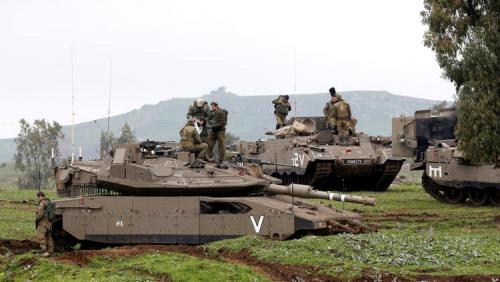Ammon News - AMMONNEWS - Jordan and Israel have recently stepped up coordination of their diplomatic activities against the backof developments in Syria.
The two countries are concerned about the renewed strength of Syrian President Bashar Assad's regime in the south of the country, and particularly over the growing Iranian influence in Syria and Iraq.
They are also concerned over the possibility that Iran will exploit Assad’s territorial gains to deploy forces from the Iranian Revolutionary Guard and Shi’ite militias, particularly Hezbollah, in the vicinity of Syria’s borders with Jordan and Israel.
In recent years, Jerusalem and Amman have gotten closer due to the increasing turbulence in the Middle East. According to reports in the American and Arab press, Israel has also provided Jordan with intelligence and security assistance in an effort to buttress Jordan’s stability in the face of a double threat: Terrorist attacks committed by extremist Sunni organizations, particularly the Islamic State, and rising Iranian hegemony in the region.
In the past, senior Israeli officials have expressed concern on various occasions that instability in Jordan could adversely affect Israel’s security situation.
In March, Haaretz reported that in a closed-door meeting last year, Israel Defense Forces Chief of Staff Lt. Gen. Gadi Eisenkot said he was concerned by the pessimistic assessment of the situation in Jordan by the Israeli ambassador in Amman, Einat Schlein. He added that Israel would lend support to the Jordanians if needed.
Back in 2004, Jordan's King Abdullah warned that the creation of a "Shi'ite crescent" led by Iran would exacerbate divisions in the Arab world.
A recent series of articles in the Al-Quds Al-Arabi newspaper written by Jordanian journalist Bassam al-Badareen, who is considered close to the royal court, described Israel and Jordan's shared concern in the face of developments in southern Syria.
According to Badareen, in a face-to-face meeting with the Russian foreign minister, his Jordanian counterpart made clear that Amman would not agree to Iranian Revolutionary Guard and Shi’ite militias establishing themselves on Jordan's northern border.
In talks with Jordan, the Russians claimed that deploying forces identified with the Assad regime to the border would push back the threat posed by the Islamic State. But the Jordanians responded that from their standpoint, the introduction of Iranians into the area would be no less dangerous.
Badareen also reported that Israel is supplying the Jordanians with satellite photos of what is taking place along Jordan’s borders with Iraq and Syria, in an effort to improve Jordan’s capacity to defend itself.
About two years ago, the Wall Street Journal reported that Israel had transferred old Cobra attack helicopters to Jordan after the Israel Air Force shut down its two Cobra squadrons.
The developments in southern and eastern Syria – a mostly desert region that is hundreds of thousands of square kilometers in area – have recently become a focus of regional attention. The United States has been disturbed by Iraqi Shi’ite militias supported by Iran that have been advancing on the Iraqi side of the border and have linked up with forces connected to the Assad regime operating on the Syrian side.
In recent weeks, several violent events have taken place between the Americans and the Syrian army and other forces in light of U.S. concern that Assad is seeking to harm U.S.-supported Sunni rebel organizations.
The Americans have deployed long-range artillery batteries in the area of Al-Tanf, where most of the incidents have occurred. On Sunday, for the first time, the U.S. Army downed a Syrian fighter jet in the area of Deir al-Zour, north of there, claiming it had threatened rebel forces.
At the same time, the Assad regime has stepped up its attacks on rebel groups in the south Syrian town of Daraa, near the Jordanian border. Russian and Syrian aircraft are responsible for the aerial assaults on the rebels, but the Shi’ite militias are focusing on ground combat. The Arab press has reported a stepped-up presence of Hezbollah and Iranian Revolutionary Guard forces in the area.
In Israel and Jordan, these developments are also sparking interest and concern at a time when it is still not clear if the Syrian regime intends to try and take control – with Russian and Iranian assistance – of the area of the border with Israel in the Syrian Golan Heights, most of which has been held by rebel groups in recent years.
*Haaretz








 comment replay
comment replay 